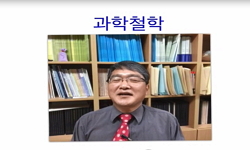Background: Over the past 30-40 years, various carbon implant materials have become more interesting, because they are well accepted by the biological environment. The traditional carbon-based polymers give rise to many complications. The polymer comp...
http://chineseinput.net/에서 pinyin(병음)방식으로 중국어를 변환할 수 있습니다.
변환된 중국어를 복사하여 사용하시면 됩니다.
- 中文 을 입력하시려면 zhongwen을 입력하시고 space를누르시면됩니다.
- 北京 을 입력하시려면 beijing을 입력하시고 space를 누르시면 됩니다.

Long-term clinical and experimental/surface analytical studies of carbon/carbon maxillofacial implants
한글로보기https://www.riss.kr/link?id=A105547186
- 저자
- 발행기관
- 학술지명
- 권호사항
-
발행연도
2015
-
작성언어
English
- 주제어
-
등재정보
KCI등재
-
자료형태
학술저널
- 발행기관 URL
-
수록면
341-3414(3074쪽)
- DOI식별코드
- 제공처
-
0
상세조회 -
0
다운로드
부가정보
다국어 초록 (Multilingual Abstract)
Background: Over the past 30-40 years, various carbon implant materials have become more interesting, because they are well accepted by the biological environment. The traditional carbon-based polymers give rise to many complications. The polymer complication may be eliminated through carbon fibres bound by pyrocarbon (carbon/carbon). The aim of this study is to present the long-term clinical results of carbon/carbon implants, and the results of the scanning electron microscope and energy dispersive spectrometer investigation of an implant retrieved from the human body after 8 years. Methods: Mandibular reconstruction (8-10 years ago) was performed with pure (99.99 %) carbon implants in 16 patients (10 malignant tumours, 4 large cystic lesions and 2 augmentative processes). The long-term effect of the human body on the carbon/carbon implant was investigated by comparing the structure, the surface morphology and the composition of an implant retrieved after 8 years to a sterilized, but not implanted one. Results: Of the 16 patients, the implants had to be removed earlier in 5 patients because of the defect that arose on the oral mucosa above the carbon plates. During the long-term follow-up, plate fracture, loosening of the screws, infection or inflammations around the carbon/carbon implants were not observed. The thickness of the carbon fibres constituting the implants did not change during the 8-year period, the surface of the implant retrieved was covered with a thin surface layer not present on the unimplanted implant. The composition of this layer is identical to the composition of the underlying carbon fibres. Residual soft tissue penetrating the bulk material between the carbon fibre bunches was found on the retrieved implant indicating the importance of the surface morphology in tissue growth and adhering implants. Conclusions: The surface morphology and the structure were not changed after 8 years. The two main components of the implant retrieved from the human body are still carbon and oxygen, but the amount of oxygen is 3-4 times higher than on the surface of the reference implant, which can be attributed to the oxidative effect of the human body, consequently in the integration and biocompatibility of the implant. The clinical conclusion is that if the soft part cover is appropriate, the carbon implants are cosmetically and functionally more suitable than titanium plates.
동일학술지(권/호) 다른 논문
-
- Korean Association of Maxillofacial Plastic and Reconstructive Surgeons
- Lee, Sang-Woon
- 2015
- KCI등재
-
- Korean Association of Maxillofacial Plastic and Reconstructive Surgeons
- Kim, Ho-Chul
- 2015
- KCI등재
-
- Korean Association of Maxillofacial Plastic and Reconstructive Surgeons
- Shin, Yu-Jeong
- 2015
- KCI등재
-
- Korean Association of Maxillofacial Plastic and Reconstructive Surgeons
- Lee, Yong-Chan
- 2015
- KCI등재




 ScienceON
ScienceON


